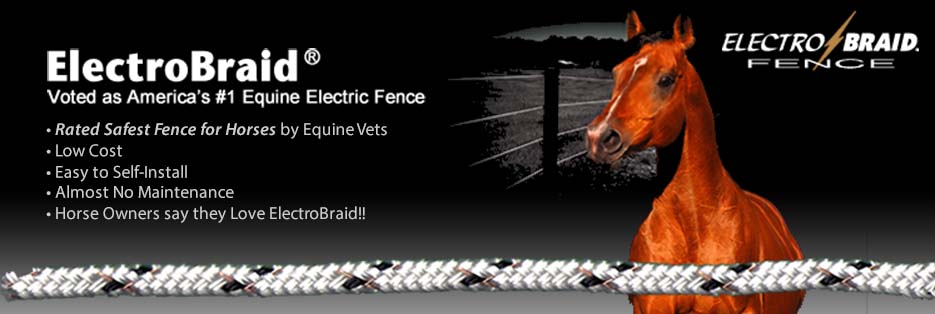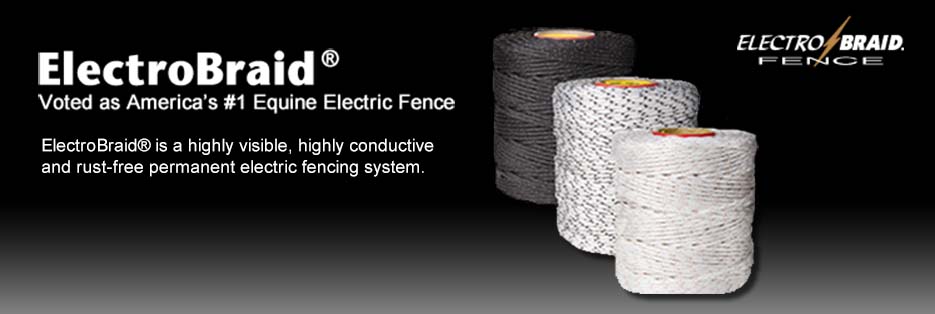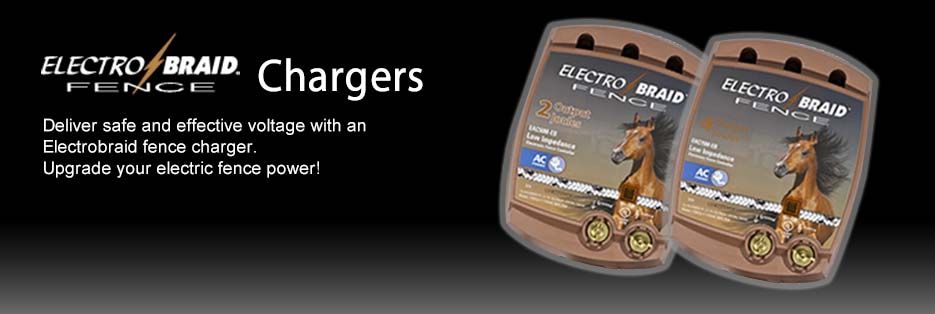ElectroBraid® Fence FAQs
Is this a permanent or temporary fence?
ElectroBraid® is versatile. It can stand alone as a permanent perimeter fence, added to protect a board or wire mesh fence, or combined with vinyl or pipe.
Will an electric fence harm my animals or children?
No. The safety of a two-year-old child is the criterion applied by national testing laboratories, such as UL and CSA, to certify the safety of an electric fence energizer. The electric pulse put out by an energizer is so short (about 3/10,000 of a second) that it hurts, but it cannot injure. Once shocked, the animal will not want to touch the electric fence again.
Can I use any energizer with ElectroBraid® ?
No. Please ensure your energizer is low impedance and certified safe by UL or CSA. It is vital the energizer you choose be powerful enough to meet your needs. In the competitive market of energizers, manufacturers considerably overstate the length of fence each energizer is capable of electrifying. A simple rule of thumb is to match your length of fence to 1/10th the energizer's rating. We recommend a minimum of 2.5 joules of output power and more for large fences.
WARNING: NEVER use an Energizer labeled "WEED BURNER" or "WEED CHOPPER"; they are unsafe and will damage ElectroBraid®".
NOTE: ElectroBraid® uses pure copper, which is the second-best electrical conductor after silver. Copper is 40 times more conductive than stainless steel.
How far apart can you space your fence posts?
Spacing depends on your weather and terrain. The standard spacing we recommend is between 30 and 40 feet. This can mean fewer posts, less work, less cost, and less maintenance! If you have rolling terrain or high snowfall, you may want to reduce spacing to 25 feet.
What type of posts do I require?
You can use any fence post as long as the ElectroBraid® is insulated. Most customers choose wooden posts—6" diameter for ends and corners, and 3-4" for line posts. Fiberglass posts do not require insulators, and T-posts can also be used with the right insulators.
Copper is such a soft metal; will it break?
No. A copper wire on its own will break, but ElectroBraid® is engineered to braid copper wires into a cushion of polyester fiber. The copper is braided into the outer jacket in two opposing directions that cross three times per inch. The copper wires form two helical coils like springs. This construction allows bend and stretch without putting strain on the copper itself. In fact, under extreme tension, ElectroBraid® itself will break before the copper wires.
Does copper rust?
No. Pure copper oxidizes naturally but only on the surface in the form of a dark green patina. Like paint, this thin coating prevents any further oxidization. Surface oxidation does not weaken the copper, nor does it reduce electrical conductivity. Pure copper, as used in ElectroBraid®, has been known to last hundreds of years, such as copper roofs on buildings. Copper is, of course, the metal used in household electrical wiring.
Won't the sun break down the polyester jacket?
No. The high-grade polyester we use is virtually unaffected by sunlight. That is why it is used for seat belts, cargo straps, parachute harnesses and other safety applications. Over time, the ElectroBraid® will yellow slightly but this will not reduce its strength. An independent laboratory subjected ElectroBraid® to a standard ASTM test for extreme ultraviolet (UV) radiation and there was no product deterioration.
How long can I expect the ElectroBraid® Fence to last?
Based on independent laboratory tests, we confidently provide a 25-year Performance Warranty that ElectroBraid® will not rust, rot, lose strength due to sunlight or weathering, or break in a normal permanent fence installation.
Do I have to stop weeds from growing up around ElectroBraid®?
Yes. ElectroBraid® is not significantly affected by grass growing up around it. The copper conductor is only a small percentage of the ElectroBraid® surface area. Therefore, you don't have to spend a lot of time mowing under the ElectroBraid® fence. However, heavy, wet tuffs of grass, bushes, or branches pressing against ElectroBraid® can drain power and cause a loss of voltage. At least once a year, weeds, bushes, and tree branches should be cleared from the immediate fence area.
Note: Routine voltage testing of the fence is a good indicator as to when to mow.



Join Us on